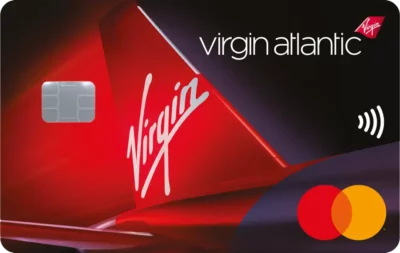Will Virgin Atlantic announce a new aircraft order at Farnborough?
Links on Head for Points may support the site by paying a commission. See here for all partner links.
I spent last weekend in Las Vegas with Shai Weiss, CEO of Virgin Atlantic, and Sir Richard Branson (and some other people, not just the three of us!) to celebrate the airline’s upcoming 40th birthday on 22nd June.
As part of the celebrations I sat down with Shai to discuss what Virgin Atlantic is up to and where he sees the airline heading.
We covered a vast range of topics including their plans for profitability, a new terminal at Heathrow and Flying Club changes – look out for these stories later in the week – but in this article I want to look at what’s happening with Virgin Atlantic’s fleet.
Over the past decade, but particularly since 2019, Virgin Atlantic has been on a huge fleet renewal program to replace older, less efficient aircraft with newer ones.
Since 2019 Virgin Atlantic has taken delivery of 12 A350s and 4 A330neos, whilst the pandemic accelerated the retirement of the gas-guzzling Boeing 747s (albeit not without a suitable send-off).
By the end of this year Virgin Atlantic will operate 45 aircraft, a number that will remain static “as we replace A330s with A330neos” according to Shai.
When the last neo of the current order arrives in 2028, Virgin Atlantic will have a fleet comprised entirely of new generation planes – or, to use one of Shai’s favourite phrases, “the youngest fleet in the sky.”
This will include 17 Boeing 787 Dreamliners, which at that point will be between 10 and 14 years old.
What will happen with the Dreamliner fleet?
10-14 years old is an interesting age for leased aircraft. Most initial leases are around 12 years long: after that, the airline and lessor need to renegotiate a renewal or part ways.
For Virgin Atlantic, that means an important juncture is quickly approaching:
“We’re considering what to do with our Dreamliners; we have 17 of them. We need to make a decision on whether to maintain or replace them. But they’re very good planes, other than the issues with the Rolls-Royce Trent 1000 engines.”
What is interesting is that, over the past 40 years, Virgin Atlantic has gone from an all-Boeing fleet (with the first Boeing 747-100 in 1984) to an Airbus-heavy fleet of (eventually) 12 A350s and 14 A330neos.
With the 787s coming up on their leases, Virgin Atlantic has an opportunity to reconsider its long-term structure. Based on my conversation, it seems like a new aircraft order may be on the cards.
During our interview, Shai told me he was attending the Farnborough International Air Show this year. It is an opportunity for airlines to meet manufacturers and suppliers, but it is also where major aircraft orders are often announced.
Whilst some airline CEOs attend every year, others are more elusive; to my knowledge, Shai Weiss has never made a public appearance there, suggesting that he has something to announce.
I asked him if he is about to announce an aircraft order.
He takes a long, teasing pause. “Possibly.”

Virgin Atlantic could announce an order for more A330neos
Assuming I am right, and his appearance at Farnborough is no coincidence, then my money would be on a follow-on order for more A330neos. It is the only aircraft that makes sense as a Dreamliner replacement: the A350 and Boeing 777X are too large.
It would help that Virgin Atlantic still has options for eight further A330neos from its original order in 2019 – not enough to replace the entire Dreamliner fleet of 17 but enough to get them going.
I’ve also been told that Airbus has chartered one of Virgin’s A330neos for display at the show. It would make sense that Airbus would want to showcase a customer that already operates the aircraft and is keen for more.
The A330neo is the same size as the Dreamliner
So why is the A330neo a good Dreamliner replacement?
For a start, the capacity of Virgin Atlantic’s A330neos and 787s are almost identical, with a difference of just four seats overall:
| Virgin configuration | A330-900neo | Boeing 787-9 |
|---|---|---|
| Total seats | 262 | 258 |
| Upper Class | 32 | 31 |
| Premium | 46 | 35 |
| Economy | 184 | 192 |
Interestingly, the A330neos have a slightly more premium configuration with an additional seat in Upper Class and 11 more seats in the ever-popular Premium cabin, at the expense of eight economy seats.
Additional neos would therefore be an almost like-for-like replacement for the Dreamliners, leaving overall capacity relatively unchanged.
Improved fleet commonality
For a small airline such as Virgin Atlantic – and it is comparatively small, with just 45 aircraft – operating three different types adds unnecessary additional complexity in terms of maintenance and pilot and crew training.
It is very easy for pilots and crew to operate on both A350s and A330s due to the commonality of the aircraft. For example, EASA in Europe issues what is called a ‘common type rating’ which requires only minimal additional training. According to Airbus:
“A330 pilots are expected to qualify on the A350 in eight working days without mandated Full Flight Simulator time.”
If Virgin Atlantic moved to an entirely Airbus operation with the A350 and A330neo it would enjoy additional flexibility in how and when it deploys staff, and reduce operational duplication.
The A330neo is likely to be cheaper
Aircraft list prices are hard to come by and are pretty meaningless anyway, as airlines typically negotiate steep discounts. However, it is likely that the A330neo is cheaper than a Boeing 787 due to a cheaper, mostly aluminium manufacturing process vs the 787’s more advanced carbon fibre construction.
The 787 is also heavily outselling the A330neo, putting pressure on Airbus to offer better pricing to stimulate demand and fill production slots.
In most cases, it would make sense to extend the lease of the Dreamliners. After all, it’s easier to keep existing aircraft than integrate new ones, especially as they already have cabins fitted out.
In this case, however, the lessors may be in a stronger position due to the high demand for the Dreamliner. There is also no financial benefit to keeping the Dreamliners as the interiors need replacing anyway: the 22-year old Upper Class seat is long overdue for an update. Shai told me that “if we were to retrofit the 787, it would probably be in the configuration of the A330-900neo.”
Since both the existing Dreamliner fleet and any incoming new aircraft need a new cabin, there is no benefit to sticking with the Dreamliner.
Conclusion
Whilst far from confirmed, it is clear that something must happen with Virgin Atlantic’s fleet soon. Shai’s attendance at Farnbough, his cagey answers and the suggestion that an announcement on the fleet “may come even earlier than late summer” suggest we will soon find out.
PS. If you are not a regular Head for Points visitor, why not sign up for our FREE weekly or daily newsletters? They are full of the latest Avios, airline, hotel and credit card points news and will help you travel better.
To join our 70,000 free subscribers, click the button below or visit this page of the site to find out more. Thank you.

How to earn Virgin Points from UK credit cards (September 2025)
As a reminder, there are various ways of earning Virgin Points from UK credit cards. Many cards also have generous sign-up bonuses.
You can choose from two official Virgin Atlantic credit cards (apply here, the Reward+ card has a bonus of 18,000 Virgin Points and the free card has a bonus of 3,000 Virgin Points):

Virgin Atlantic Reward+ Mastercard
36,000 bonus points and 1.5 points for every £1 you spend Read our full review

Virgin Atlantic Reward Mastercard
6,000 bonus points, no fee and 1 point for every £1 you spend Read our full review
You can also earn Virgin Points from various American Express cards – and these have sign-up bonuses too.
The American Express Preferred Rewards Gold Credit Card is FREE for a year and comes with 20,000 Membership Rewards points, which convert into 20,000 Virgin Points.
SPECIAL OFFER: Until 14th October 2025, the sign-up bonus on the American Express Preferred Rewards Gold Credit Card is doubled to 40,000 Membership Rewards points. This would convert to 40,000 Virgin Points! The spend target is changed to £5,000 within SIX months of approval. T&C apply. Click here to apply.

American Express Preferred Rewards Gold Credit Card
Your best beginner’s card – 40,000 points, FREE for a year & four airport lounge passes Read our full review
The Platinum Card from American Express comes with 50,000 Membership Rewards points, which convert into 50,000 Virgin Points.
SPECIAL OFFER: Until 14th October 2025, the sign-up bonus on The Platinum Card from American Express is increased to 80,000 Membership Rewards points. This would convert to 80,000 Virgin Points! The spend target is changed to £10,000 within SIX months of approval. T&C apply. Click here to apply.

The Platinum Card from American Express
80,000 bonus points and great travel benefits – for a large fee Read our full review
Small business owners should consider the two American Express Business cards. Points convert at 1:1 into Virgin Points.
SPECIAL OFFER: Until 14th October 2025, the sign-up bonus on The American Express Business Platinum Card is increased to 120,000 Membership Rewards points. This would convert to 120,000 Virgin Points! The spend target is changed to £12,000 within three months of approval. T&C apply. Click here to apply.
SPECIAL OFFER: Until 14th October 2025, the sign-up bonus on The American Express Business Gold Card is TRIPLED to 60,000 Membership Rewards points. This would convert to 60,000 Virgin Points! The spend target is changed to £6,000 within three months of approval. The card remains free for the first year. T&C apply. Click here to apply.

The American Express Business Platinum Card
120,000 points when you sign-up and an annual £200 Amex Travel credit Read our full review

The American Express Business Gold Card
60,000 points sign-up bonus and FREE for a year Read our full review
Click here to read our detailed summary of all UK credit cards which earn Virgin Points.




 Rhys
Rhys 





Comments (70)